It’s no secret that the Arizona Coyotes have had a colorful past when it comes to the owners of the team. They have had a variety of owners from the best player to ever play in the NHL to the league itself. In just almost 30 years, it’s been an interesting path to get to the point where the franchise is today involving several sets of owners. From Phoenix to the endless cities rumored to be relocation options for the team, it’s been certainly a ride for the Coyotes. However, it all starts up north in Winnipeg.
Richard Burke and Steve Gluckstern
It all started in Manitoba with the original Winnipeg Jets. Winnipeg was the second smallest market in the NHL and was soon to be the smallest when the Quebec Nordiques moved to Denver in 1995. With the Canadian dollar going down in value and the Winnipeg Arena, the Jets’ home since the inception of the franchise not having luxury suites and aging poorly, Barry Shenkarow agreed to sell the franchise to Steve Gluckstern and Richard Burke for $65 million.
Gluckstern was an American businessman while Burke was a founder of a health insurance company. The duo first wanted to relocate the team to Minneapolis after the city’s original team, the Minnesota North Stars, relocated to Dallas, Texas. The relocation efforts failed however and the new owners set their eyes on a new location: Phoenix.
Jerry Colangelo was the owner of the Phoenix Suns. He also owned America West Arena which was the home of the Suns. However, he wanted to see the arena used more and repeatedly asked NHL Commissioner Gary Bettman for a hockey team to fill it. With their original expansion location not feasible and Colangelo wanting to share his arena with the team, Gluckstern and Burke took some of the Jets players and their families to Phoenix during the All-Star Break. They toured schools and the city and started acclimating themselves to the desert.
“Somebody gave me a cactus in a pot,” former captain Shane Doan said to Craig Morgan. “I’m a 19-year-old kid and I’m thinking. ‘I can barely take care of myself,’ and then I learned that you really don’t have to do anything to take care of a cactus.”
Players got used to the stark differences in Arizona as opposed to Winnipeg. Instead of being around foxes and moose, the players now were surrounded by rattlesnakes and scorpions that greeted the NHL players in their hotel rooms and pool filters.
The Jets played their final game in Winnipeg on April 28, 1996, against the Detroit Red Wings, losing 4-1 and being eliminated in Game 6 of the playoffs. The next season, the Coyotes began their play in America West Arena. Under the ownership of Burke and Gluckstern, they enjoyed perhaps their most successful period as a franchise. The team splurged and brought in big-name players like Jeremy Roenick and also kept most of their franchise players from their days in Winnipeg like Keith Tkachuk and Teppo Numminen. They consistently made the playoffs for four straight seasons even though they lost in the first round each time.
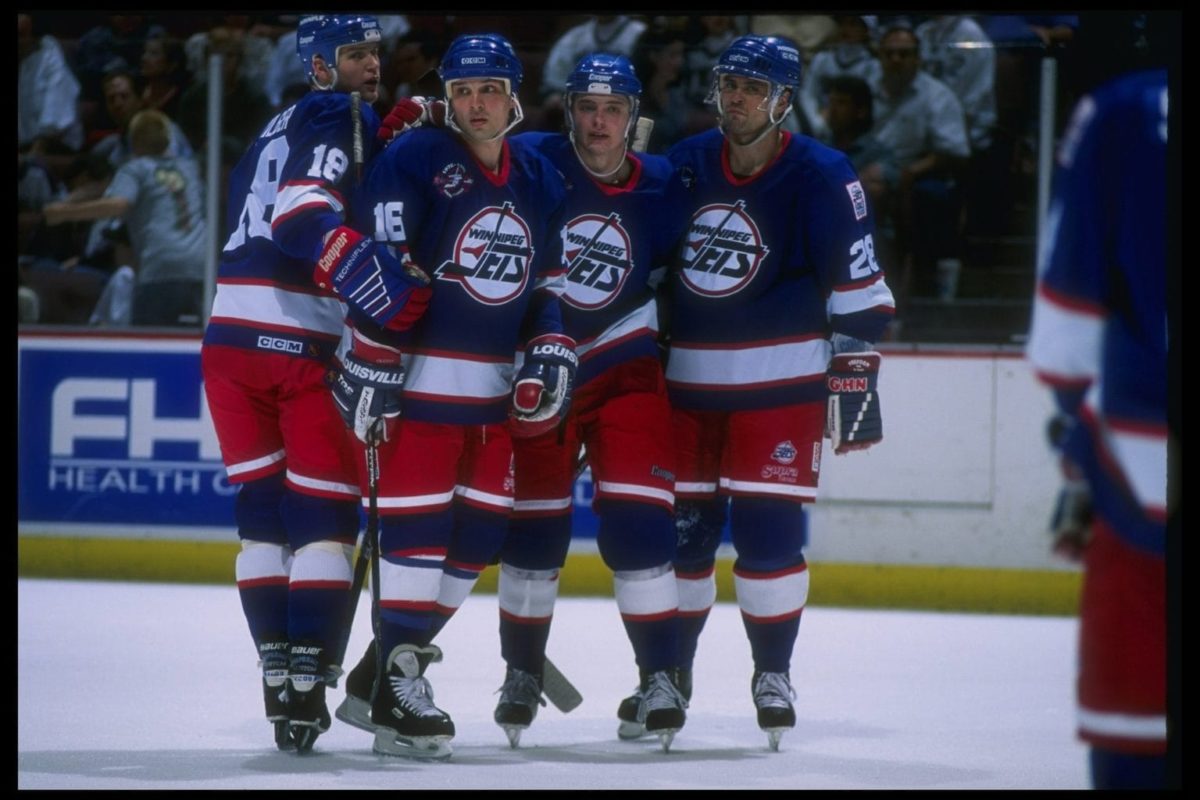
The main problem with the team at this stage was an issue that has haunted the team forever: the arena. America West Arena wasn’t built for hockey and sections of it had to be closed off due to the angles of the seats, including one where pucks would fly directly into. Just a reminder that no safety nets were protecting the fans during this time. Not to mention they had practice arena issues. The Ice Den in Scottsdale wasn’t built yet so the Coyotes had to use Oceanside Arena to practice out of.
Burke bought out Gluckstern in 1998 and became the sole owner of the team. He wanted to build an arena for the Coyotes in Scottsdale on the Los Arcos Mall property. The land was owned by Steve Ellman who is the founder of Ellman Companies: a developer of retail and entertainment centers. The two mutually wanted to bring a hockey arena to the site but disagreed heavily on the timeline of the project.
With Ellman pressing heavily on him to acquire the team and the lack of other properties to house an arena close by, Burke decided to give in and sell the team in 2001 for $87 million to Ellman. He didn’t want it moving elsewhere in the Valley knowing they wouldn’t thrive in any place but in the Phoenix metro area.
“We had a pretty complete deal to build a new stadium at Los Arcos,” Burke said to Morgan. “The stadium deal was there. The state and local tax revenue were there and I was prepared to put up the difference,” he said. “The piece of property was owned by someone else and it came down to the fact that those people wanted to own the team as well as build the building. In the interest of getting it done, I put it straightforwardly: Either you sell me the land or I’ll sell you the team but we have to put two together so we can get this done.”
Under Burke, the Coyotes made four playoff appearances: the most under any owner. It was clear Burke cared about the team and sport before anything else including outside revenues. Something that would change rather quickly.
Steve Ellman and Wayne Gretzky
Ellman’s time as an owner started with a battle against Red Robin. Yes, the burger franchise. The Los Arcos Mall area that he owned was being demolished with the Red Robin on the outskirts of the property planning to stay afloat as long as it could. He had promised Red Robin that they would be part of the redevelopment of the land. The deal was broken however and Red Robin sued the owner and his real estate group.
Ellman and Scottsdale officials began arguing over the financial aspect of the proposed arena. Eventually, the rest of the demolition of the former mall took place, as well as the Red Robin that had caused the owner so many issues. However, the constant delays had made Ellman turn elsewhere.
Glendale is a city approximately 20 minutes away from Phoenix with no traffic. At this point, there was nothing in the city. The Arizona Cardinals were still playing out of Sun Devil Stadium and the city was essentially just farmland. It was a lot of empty land, ripe for the picking for those who dared to look west. Ellman was more concerned about the additional features he would get with the arena than the actual team. He proposed a whole entertainment center with numerous shopping venues and an arena. Glendale approved the idea and borrowed $183 million to start the Westgate project. Little did the Coyotes know this was a decision that would haunt them forever.
When Ellman purchased the Coyotes, he had a little help from an icon in the league. Just a man named Wayne Gretzky. He purchased 10 percent of the team and became the head of hockey operations. While the man nicknamed “The Great One” hasn’t been Coyotes fans’ favorite person after becoming coach later down the line and leading the team to mediocrity, he is one of the main reasons why the Coyotes are still in Arizona. Around this time, the team was rumored to be relocated to Portland, Oregon with Microsoft owner Paul Allen taking interest. The Coyotes were in massive debt and no one wanted to partner with Ellman to keep the team in the Valley. That was until he made in hindsight an extremely smart move to bring Gretzky into the fold.
Ellman was more of a real estate guy as made obvious with the move to Glendale. He didn’t know much about hockey, unlike Burke. Bringing Gretzky in as an owner made a whole lot of sense to bring attention to the team and also bring in someone extremely knowledgeable about the sport.
“When Ellman bought the team, nobody was chasing down to buy the Phoenix Coyotes,” Gretzky said to the East Valley Tribune (from ‘Ellman stopped Coyotes’ migration’, East Valley Tribune, 4/14/06). “Nobody was chasing down to build this complex here, and he was the one man with the vision. He was a real estate guy and he became a hockey fan.”
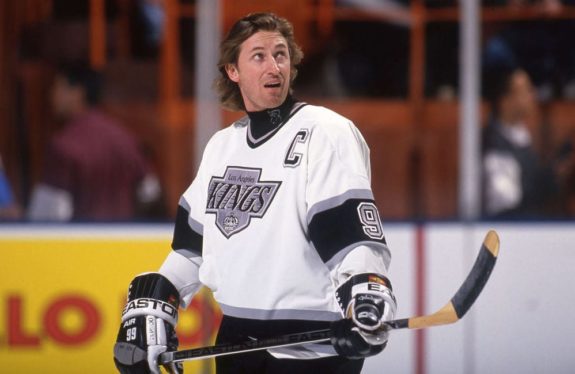
Bringing Gretzky in as coach was a whole different issue and the Coyotes struggled on the ice. Under Ellman, they made one playoff appearance which was the year he purchased the team. They moved out of American West Arena in 2003 and began play in Glendale Arena the same year.
The Ellman era wouldn’t last long. The club would fall under the control of Jerry Moyes: the founder of Swift Transportation which is a trucking company in 2006, only five years after Ellman purchased the team from Burke. However, he helped the team stay in the Valley despite moving it out to Glendale: a move that would backfire on the team. In the end, despite only one playoff appearance, Ellman loved owning the team.
“The past five years have been the best five years of my life,” Ellman said to the East Valley Tribune. “What guy wouldn’t want to own a professional sports franchise and who in the world wouldn’t like to be Wayne Gretzky’s partner?”
Jerry Moyes
The Jerry Moyes era was a horrible era for Coyotes fans. The sad part is it might not even be the worst era. In 2006, Ellman sold his controlling interest in the Coyotes (and their arena) to Moyes. He retained control of the Westgate Entertainment District and Gretzky retained a minority share in the ownership.
Right off the bat, Moyes had no interest in owning the team. He immediately tried to find a buyer and was annoyed with the NHL for interfering constantly in his attempts to sell the team. In fact, beyond that, Moyes didn’t do much as an owner. The team only had one winning season under him but they also weren’t bad enough to get a top draft pick often hovering around a .500 record.
In 2008, Moyes informed Bettman that he would stop funding the team and in 2009 intentionally put the Coyotes into Chapter 11 bankruptcy (from ‘Coyotes owner files Chapter 11 bankruptcy’, The Glendale Star, 5/6/09). It was revealed that he had received a team that hadn’t made any profit since moving from Winnipeg. Documents also revealed that it had lost $73 million in the past three seasons. Bettman attempted to facilitate a sale to Jerry Reinsdorf, owner of the Chicago White Sox and Chicago Bulls. However, the deal would’ve seen Moyes get almost no profit out of the sale.
Moyes then attempted to sell to Jim Balsillie who wanted to move the team to Hamilton, Ontario. Balsillie previously had tried to pry the Pittsburgh Penguins and Nashville Predators out of their respective markets to put a team in Hamilton. This surprised the league and in response, the NHL stripped Moyes of all ownership authority.
This marked the tipping point where the legal issues got ugly. The NHL voted 29-1 to not let Balsillie purchase and relocate the Coyotes. NHL Deputy Commissioner Bill Daly stated that Balsillie was rejected under bylaw 35 of the NHL Constitution, which allows applications to be rejected to persons whom the NHL believes are not of “good character and integrity.”
Balsillie responded with a filing stating “the NHL has long tolerated indicted and even convicted criminals among its ranks”, noting that moral grounds and questions of character have never been used “in the entire history of the NHL to reject any applicant.”
Moyes meanwhile filed a lawsuit against the NHL calling the league “an illegal cartel.” This infuriated Bettman. The league had been financially helping support the team despite Moyes owning the Coyotes.
After going through court, it was deemed that Balsillie couldn’t purchase the team and only the league’s bid could be accepted. After negotiations, Moyes sold the Coyotes to the NHL for $140 million in 2009.
In the end, Moyes didn’t like owning the Coyotes and just wanted money. After selling the team, Moyes finally confirmed his thoughts on the sport in Arizona.
“I don’t think it’s going to work,” Moyes said to Arizona Sports. “You just look at the economics, it just won’t work. We have so many other sports activities to take not only the advertising dollar but the consumer dollar.”
The NHL
The NHL was never supposed to own the Coyotes. The league wanted a stable owner to take over from Moyes. However, due to his attempt to sell to Basillie, the league was forced to take control of the team due to a court ruling. The league first worked out a lease agreement with the city of Glendale to secure their place in the Valley. Then it went to work on finding a permanent owner.
While the league wanted to keep the team in Arizona, it made backup plans for True North Entertainment to purchase the Coyotes and relocate them back to Winnipeg if necessary. That ownership group later purchased the Atlanta Thrashers and the league put their new backup city as Seattle or Quebec City.
The league had interest including sales that almost went through with Matthew Hulsizer and Greg Jamison. However, both of those deals fell through due to disagreements with the city council and the conditions of the current lease.
On the ice, the team actually had its best couple of seasons. The Coyotes made the playoffs three straight times, captured a Pacific Divison championship, and won their first playoff series since moving to Arizona against the Chicago Blackhawks. They went on to make it to the Western Conference Final where they lost to the eventual Stanley Cup champions: the Los Angeles Kings.
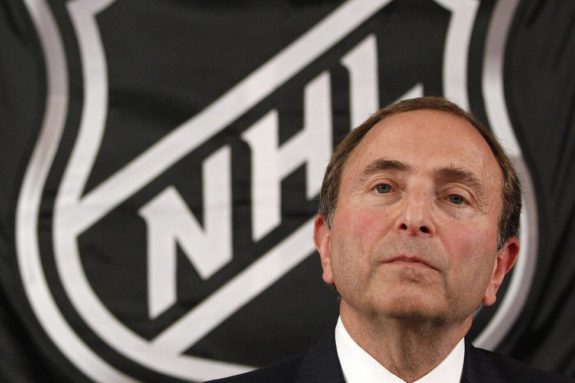
Eventually, enough became enough. The NHL publicly announced that the Coyotes would move to KeyArena in Seattle if a deal between the city of Glendale and the team wasn’t reached by July 2, 2013. The lease that the league had originally signed had expired. Tensions were high and all signs pointed towards the Coyotes finally relocating. However, in true Coyotes fashion, it would take dramatics for everything to come into place. In the late evening of July 2, the Glendale City Council voted 4-3 to approve a 15-year lease agreement for the team to continue to play in the now-named Jobing.com Arena.
With the lease agreement, the NHL officially approved a group called RS&E to purchase the Coyotes for $225 million, ending the league’s ownership of the team. On the ice, the team had its most successful season to date, winning a division title and two playoff rounds all in the same year. Off the ice, it was always a question of if it was going to be in Arizona the next season.
IceArizona
For one year, it was a blast. If you could buy an NHL team with nine of your friends, wouldn’t you have fun with it? That’s exactly what the RS&E or as they renamed themselves: IceArizona did.
“You’d lose a tough game on the road and then the owner would get on the team bus and start singing and saying turn on the radio,” said long-time video coach Steve Peters on the PHNX Arizona Coyotes podcast.
Spending was unlimited with the group as the owners took personnel out to fancy restaurants and usually traveled with the team to the point where restrictions had to be put in place. It was a bizarre ownership group that took the Coyotes by storm.
The late George Gosbee and Anthony LeBlanc were the two main people behind the IceArizona ownership group. LeBlanc named himself president and reportedly made a profit out of being placed in that role. Eventually, they found themselves in hot water as they got sued by a Scottsdale PR firm for alleging the Coyotes had gone back on a sponsorship deal worth $250,000.
While the group had fun and loved hockey, ultimately it was a venture for money. They sold controlling interest in the team to Andrew Barroway, an American hedge fund manager for $152.5 million just a year after buying it from the NHL. While the group still owned 49% of the team, Barroway bought out IceArizona to become the sole owner in 2017.
One year was all it took for IceArizona to hand the ownership keys to someone else. It was a time of weirdness for all who worked for the franchise and a time of fun for the owners. In the end, IceArizona didn’t know how to run a hockey team despite loving the game. It also ended up being a quick financial decision rather than a long-term NHL owner decision. Such an example was Gosbee’s first reaction over a call to Morgan after selling the team.
“Craig, we crushed that investment,” he said.
Andrew Barroway
The Barroway saga wasn’t as bad as most make it out to be. Part of that is probably due to the awful owners that came before him. He had been interested in buying an NHL team for a while with attempts to buy the New Jersey Devils and New York Islanders before landing the Coyotes.
The main issue that Barroway faced was the arena. On June 10, 2015, the Glendale City Council terminated its 15-year lease with the Coyotes saying the integrity of the contract had been compromised. This was just two years after agreeing to the lease and this marked the start of the fight between the city and the team.
“We are disappointed with the city’s decision to violate its obligations under the agreement that was entered into and duly approved only two years ago,” LeBlanc said. “We will exhaust any and all legal remedies against the city of Glendale for this blatant violation of its contractual obligations to us.”
The two sides eventually reached a two-year deal to play out of the arena. However, the damage was done and Barroway began searching for land to build a new one.
Attendance was another factor in why the Glendale arena didn’t work. No one wanted to drive out to Glendale for 40-plus home games. Traffic was often an issue increasing the drive to around 40 minutes from Phoenix and Tempe which was the location of a majority of the population. Glendale never blew up in terms of population as many expected it to and it hurt the Coyotes.
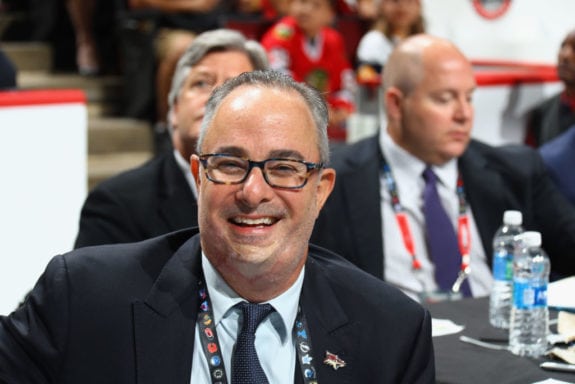
Barroway’s attempt to get an arena was to build one in Tempe. With the help of Arizona State University (ASU), it would’ve sat 16,000 people and had an adjacent 4,000-seat rink for the Coyotes to practice out of and ASU to play out of. Barroway wanted to get an arena deal done and knew the future of the franchise depended on it especially with the relationship souring with Glendale.
“We’re going to get a new stadium here. It’s just a question of when,” Barroway said to Arizona Sports. “We’re going to make it happen. I think we’ve put the people in place to get it done, I can tell you we are aggressively pursuing all options and we have to make it work. We don’t have a choice.”
Unfortunately for the Coyotes, ASU pulled out of the deal, killing it (from ‘ASU pulls out of plan to bring Arizona Coyotes to Tempe’, azcentral, 2/6/17). It was the ultimate failure during Barroway’s tenure and probably was the reason why he ended up selling the team two years later. Under Barroway, they never made the playoffs, usually appearing near the bottom of the league.
Barroway sold the team to Alex Meruelo in 2019, retaining five percent of the club. He’s still a minority owner despite Meruelo’s attempts to buy him out. Recently, Barroway was arrested and charged with domestic violence. The charges were dropped but Bettman announced Barroway would be banned from the league, making Meruelo the sole owner.
Alex Meruelo
The current owner of the Coyotes has been one of the most active ones. He is a casino owner, owning casinos in Reno and Las Vegas. He purchased the team when it was valued at $290 million. He made it clear right when he was first introduced as owner that he was committed to Arizona.
“The Arizona Coyotes team is poised to do great things on and off the ice,” Meruelo said in a statement (from ‘New Ownership: Alex Meruelo officially purchases majority steak in Arizona Coyotes’, azcentral, 7/29/19). “I look forward to helping hockey continue to thrive in the desert, and I am committed to providing our passionate fans, loyal partners and the entire State of Arizona with a team they can be proud of for years to come.”
Meruelo’s team made the playoffs in the 2019-20 season due to the COVID-19 expansion of the playoffs. The Coyotes won a play-in round against the Predators but lost to the Colorado Avalanche. Immediately after, they began a rebuild and are just now coming out of it.
Related: Coyotes Need to Move Core Piece to See Improvement
The main task for Meruelo was to build an arena, something that the owners before him failed to do. However, unlike past owners, he didn’t have a full-size NHL arena to keep his team housed. In 2021, the Glendale City Council chose not to extend their lease agreement with the Coyotes making their future questionable. They also were threatened with being locked out of Gila River Arena due to unpaid taxes. As a result, they entered an agreement with ASU to play out of Mullett Arena, the 5,000-seat arena built to house ASU NCAA hockey while the team searched for a new arena for themselves.
Meruelo’s first attempt was building a 16,000-seat arena on a parcel of land that used to be an old city dump. It needed a lot of work but he pledged to remediate the land and also build the arena and the planned entertainment center with his own money. The problem was that many were against the project for multiple reasons that didn’t make sense on paper. However, the opposition did a fantastic job at manipulating the truth and getting Tempe citizens to believe in their cause. Meanwhile, the Coyotes did a poor job campaigning for their new arena and eventually lost the right to purchase the land in a public vote.
With a lot of uncertainty, Meruelo released a rare statement confirming that the organization was still looking for a location in the Valley.
“Were we disappointed by the vote in Tempe? Absolutely, but not defeated. I can’t ask our players to give it their all on the ice if I don’t do the same as the owner. Our organization can’t ask them to pick themselves up after a loss if we don’t all do the same ourselves. We are using all of our resources and reach to put together a great team on the ice, and to secure a new permanent home that will be the envy of Arizona and all of the NHL.”
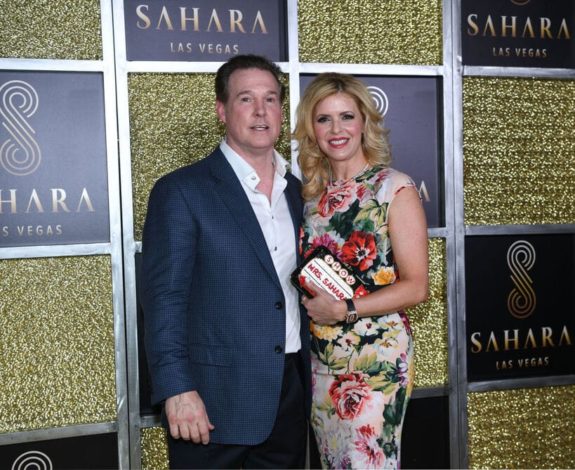
Since then, Meruelo has signed a letter of intent to purchase land in Mesa that never went anywhere further than that. More recently, he has been rumored to purchase land in north Phoenix right near the border of Scottsdale. The pressure has ramped up with the failure of the Tempe arena, the national media calling for a resolution after years of failing to obtain land to build a new arena on, and the emergence of Salt Lake City just one state north generating massive interest for a team.
The next few months and Meruelo’s ability to purchase the north Phoenix land will really tell what kind of owner Meruelo is. Off the ice, he’s done a decent job at creating events for the Coyotes to be more visible in the community. On the ice, he’s trusted Bill Armstrong to build a team to the cap ceiling, and now it has a good young core. The arena however is the do-or-die for Coyotes owners, from Meruelo and potentially onwards, until one is built or something drastic happens to the team.
In the end, the Coyotes have had a colorful history in the ownership box. From battling Red Robin to an owner purposely sending the team into bankruptcy, to the current owner who is battling immense pressure to hopefully finally build a viable building for the team, it’s been a ride for the fanbase who have seen multiple owners come through the franchise in under 30 years. The hope for the team is that Meruelo can finally be the guy who breaks through and finds a plot of land for an arena. If not, it becomes yet another challenge in the Coyotes’ history. Relocation and other issues have threatened the team for years, but the resolution and constant ownership changes finally seem to be coming to an end. For better or worse for the NHL’s future in Arizona.
